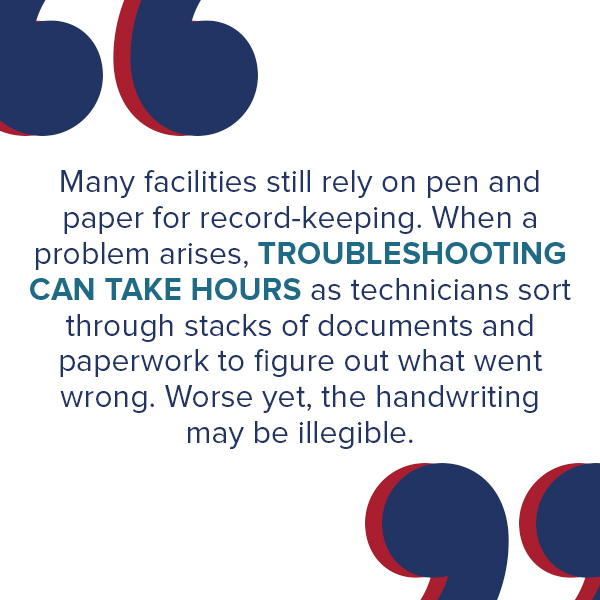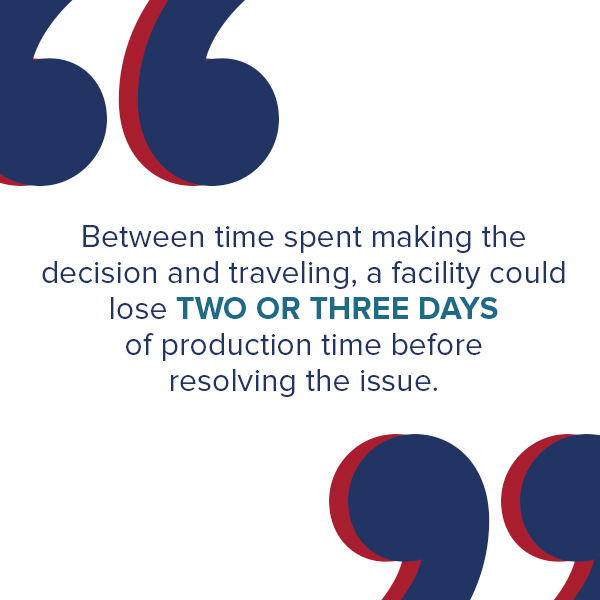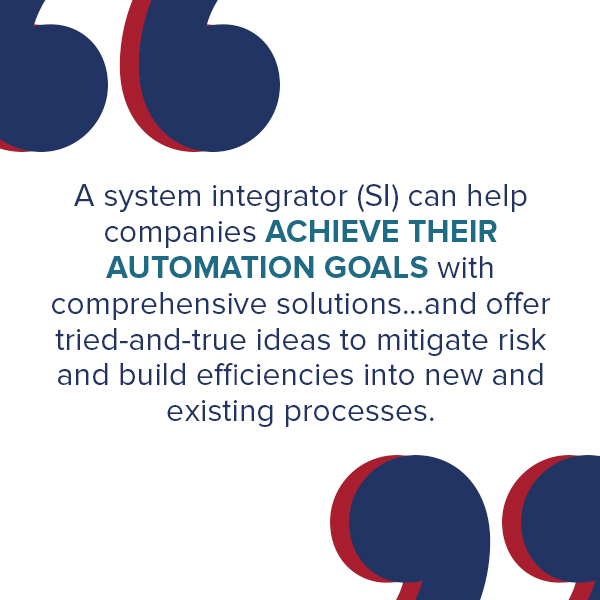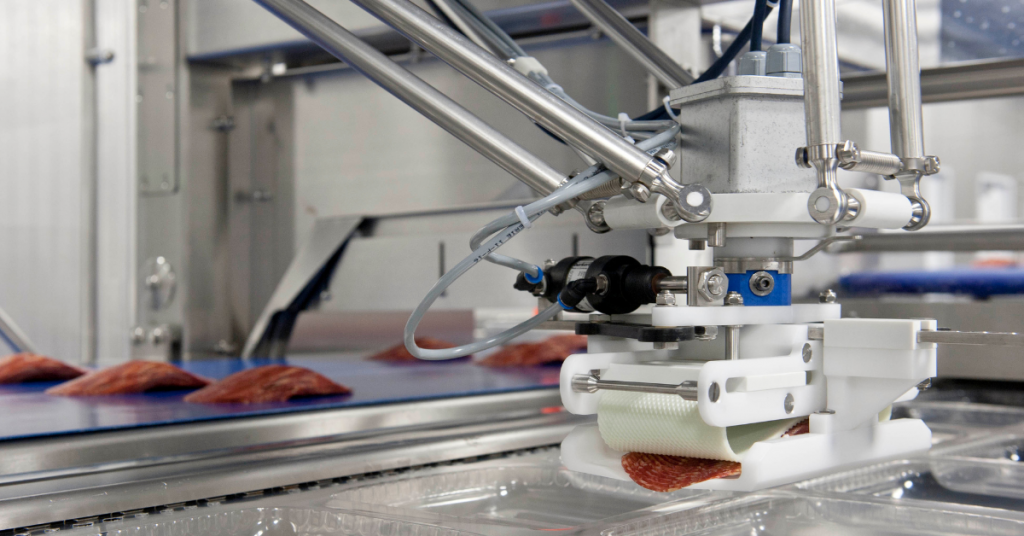Automation is an integral component of a modern facility’s competitive advantage. In addition to enabling rapid throughput, robotics and automation solutions can help minimize production issues stemming from fluctuating factors like labor availability, supply chains and material prices.
Historically, hefty price tags have acted as the main bottleneck to investments in cutting-edge manufacturing technology. The good news is technology is getting cheaper and easier to implement, making it harder for plant owners to ignore the long-term return on investment (ROI) of upgrading their facilities. However, plant managers face another challenge in today’s market: What happens when these sophisticated systems need maintenance or repairs?
According to the most recent data from the U.S. Bureau of Labor Statistics, the manufacturing sector experienced 399,000 total separations in January 2023 alone, with 803,000 job openings at the end of the month. As the data suggests, hiring, training and retaining skilled technical workers who can rapidly service a plant’s newly automated processing lines isn’t as straightforward as it may appear.
Creating a plan before disaster strikes
Proactivity is a general best practice when running a food processing plant, but especially when that facility is equipped with sophisticated systems and automation. In this blog post, we’ll cover some of the strategies food manufacturers can integrate to mitigate risk and reduce downtime in the event of equipment failure.
Hire key operators and technicians early
When embarking on a new project — whether building new, expanding or upgrading — owners often focus so much on the design and construction that they forget to think about the resources needed to keep the facility running smoothly.
Traditionally, companies only hire and train mechanical and technical control personnel when they’re ready to start production, but this can lead to gaps in knowledge that can slow down the ramp-up process. After all, a lot of critical knowledge is exchanged during the design, startup and installation phases.
Embedding key operators and maintenance staff during early phases and letting them provide feedback on how to improve processes and operations can be extremely beneficial. Automation design is getting increasingly complex, so it makes sense to have staff who understand how new equipment is built and wired before any problems arise. This way, you’ll already have a well-trained and knowledgeable crew in place to keep the plant running smoothly as soon as the startup phase is complete.
Digital documentation

Developing standard procedures for documentation and diagnostic screenings takes time, but the payback is instantaneous. Many facilities still rely on pen and paper for record-keeping. When a problem arises, troubleshooting can take hours as technicians sort through stacks of documents and paperwork to figure out what went wrong. Worse yet, the handwriting may be illegible. Going offline to address administrative issues like these can cost a facility millions of dollars.

Transitioning from analog to digital documentation yields numerous benefits. Firstly, it enables personnel to efficiently troubleshoot and address problems in critical moments. Secondly, manufacturing execution systems (MES) collect and analyze data to produce detailed diagnostic reports that can pinpoint precisely when, how and why an error or malfunction occurred, including which specific motor failed in any line.
Industrial internet of things (IIoT)
The IIoT connects subsystems in industrial equipment — such as sensors, programmable logic controllers (PLCs) and Human-Machine Interfaces (HMIs) — to the internet to enable real-time data collection and remote monitoring. This technology can be leveraged to proactively monitor a system’s health and streamline maintenance. While features like vibration and temperature sensors may have once been considered “nice-to-haves,” they are quickly becoming “must-haves” as plants become more automated.
There are some limitations to integrating IIoT in existing facilities, however. It’s challenging to install sensors for data collection in plants that do not have existing PLCs or a robust network infrastructure. In these situations, it’s necessary to schedule downtime to perform equipment upgrades and installation. Integrating IIoT technology during the design phase of equipment development is the most cost-effective approach overall.
Remote monitoring
Consider a piece of equipment that goes down in a plant located in Florida. If the original equipment manufacturer (OEM) is in California, they would traditionally need to travel across the country to troubleshoot and repair it. Between time spent making the decision and traveling, a facility could lose two or three days of production time before resolving the issue.

Providing OEMs with private network (VPN) access to your network allows them to support the facility remotely as quickly as possible. It’s important to remember that setting up a network infrastructure is a complex task that should be handled by a qualified professional. They have the expertise to seamlessly integrate cybersecurity measures into the design, ensuring your network is secure and protected.
Industrial cloud servers
Plant owners and managers usually employ full-time IT professionals to manage their servers. However, when it’s time to upgrade, facilities must buy additional servers and retrain their employees to use them.
Using a cloud service provider ensures new and existing servers can stay up-to-date over time. These providers maintain and troubleshoot servers through a monthly subscription, allowing customers to access the latest technology without extra work. Investing in these services is a great way to keep pace with the rapidly evolving world of technology.
Final thoughts: how to pick a good system integrator
While robotics and automation technology are becoming more affordable, it’s not always fiscally realistic to upgrade every component upfront. Establishing a three-to-five-year strategy can help stakeholders prioritize how to replace and update critical systems and subsystems and set up a game plan for efficient execution.
A system integrator (SI) can help companies achieve their automation goals with comprehensive solutions. Since they also have a finger on the pulse of the latest technological advancements, an SI partner can offer tried-and-true ideas to mitigate risk and build efficiencies into new and existing processes.

Vetting qualified SI professionals can be a demanding but critical process. This partnership will set the tone for a facility’s short- and long-term integration strategies — for both full-scale systems and individual technology upgrades. Consider the following questions during the decision-making process:
- Can the provider demonstrate a list of executed projects and/or clients with examples of challenges they helped overcome?
- Do they understand both the short- and long-term corporate and plant goals?
- What is their implementation methodology?
- Do they have a consistent team? Who does it include?
- Do they offer startup support? To what extent?
- How do they handle system knowledge transfer to plant personnel?
- How do they approach migrating a complex system with minimal downtime?
Have questions about the best path for upgrading your facility to the latest technology? Stellar’s automation and controls experts are available to help. Email us at foodforthought@stellar.net or give us a call at 800.488.2900.
Note: A version of this post first appeared in the April 2023 issue of Plant Engineering magazine.



